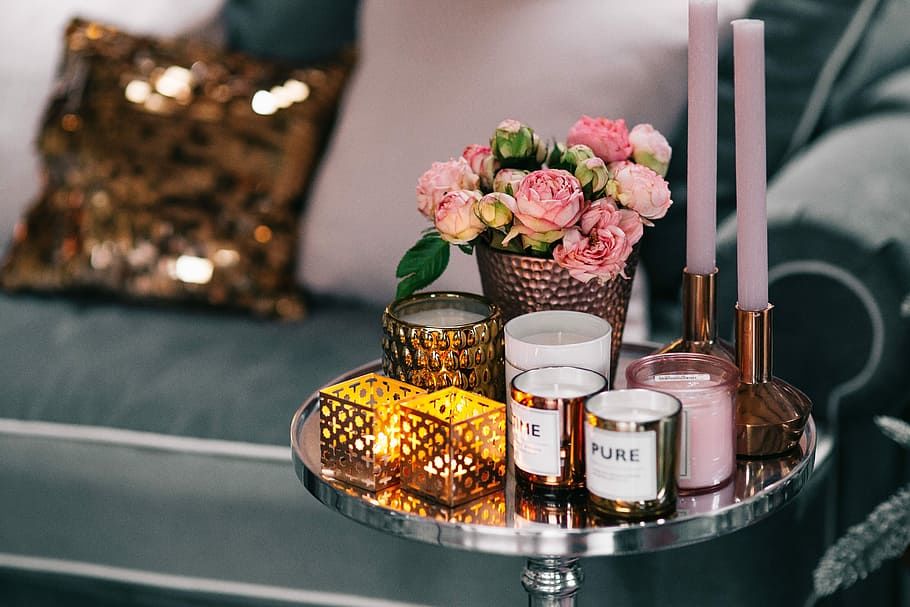Smell the fragrance and recognize the ancients. More than a hundred incense utensils bear witness to the millennium of incense culture.
2024-09-04

Glass pointed bottom spice bottles from the Western Zhou Dynasty, red pottery incense burners from the Six Dynasties, incense burners and incense sticks from the Tang Dynasty, incense burners and incense sticks from the Song Dynasty, standing sandalwood figures from the Liao Dynasty, glazed incense sticks from the Ming Dynasty, peach blossom jelly incense burners from the Qing Dynasty... Recently, "incense ware"—— The "Special Exhibition of Ancient Incense Utensils" opened at the Dabaoen Temple Ruins Museum, displaying more than a hundred incense utensils and exhibits of different ages, materials and shapes.
As early as the pre-Qin Dynasty, wearing sachets, inserting herbs, and bathing in fragrant soup became popular; during the Warring States period, the aromatherapy furnace Boshan furnace was well-made; by the Han Dynasty, incense had become one of the main trade goods; in the Ming and Qing dynasties, incense learning Taking shape, the incense burner has become a standard feature in literati's study rooms. "Reading at Night with Incense on Red Sleeves" depicts the elegance of literati burning incense while studying in their study. From this special exhibition of ancient incense vessels, we can see that "incense" is indispensable in the daily lives of ancient people and is also an important part of traditional Chinese culture. From burning, hanging, smearing, and even using it for timekeeping in a whimsical way, it all reflects people's love for "fragrance" and their exquisite taste in life. "Fragrance" has also formed a unique cultural connotation during its long historical development process, which has been passed down to this day.
four to five thousand years ago
The ancestors in the Yangtze River Basin have begun to use incense
"Our ancients burned various wooden materials to make fires for sacrifices. In the process, they were exposed to the aroma and gained experience from life." Wang Xingping, honorary curator of the Dabaoen Temple Ruins Museum, introduced that inviting heaven from the pre-Qin period During the Song Dynasty and the Song Dynasty, incense was endowed with many spiritual sustenance and cultural connotations.
More than 6,000 years ago, people had burned fragrant firewood and other sacrifices to worship the gods of heaven and earth. There is a parallel clue to the traditional use of incense in China - the use of incense in daily life. Its history can also be traced back to ancient times and even ancient times. Archaeological discoveries such as pottery incense burners in recent decades show that as early as four to five thousand years ago, , the ancestors in the Yellow River Basin and Yangtze River Basin have already begun to use incense. The Hongshan Culture in the Liaohe River Basin discovered a pottery incense stove lid 5,000 years ago; the Longshan Culture in the Yellow River Basin discovered a yurt-shaped gray pottery incense stove more than 4,000 years ago; the Liangzhu Culture in the Yangtze River Basin also discovered a bamboo incense stove more than 4,000 years ago. The patterned gray pottery smoker is consistent with the smokers of later generations and has a beautiful appearance. It can be called a "luxury product" at the end of the Neolithic Age.
The exhibits in this incense vessel exhibition all come from the personal collection of collector Xu Wenju. One of the oldest incense vessels is a glass pointed-bottomed spice bottle from the Western Zhou Dynasty. Xu Wenju told reporters that glass was produced at that time mainly as a substitute for jade, which was different from the glass we see in modern times.
At that time, there was another use for incense - "Zhou Rites" recorded this: "Fumigating it with grass is like a common insect." This shows that incense originated from ancient people who smoked smoke to kill mosquitoes and eliminate odors to purify the air.
As we all know, "The Book of Songs" is the earliest poetry collection in my country. It records social life from the Zhou Dynasty to the Spring and Autumn Period. The Book of Songs records a total of 291 species of materia medica and related organisms, among which 9 species of aromatic spices include artemisia annua, rue, orchid, calamus, Imperata, motherwort, mugwort, adenophora, and sandalwood.
During the Spring and Autumn Period and the Warring States Period, aroma as a form began to spread among literati. Qu Yuan wrote in "Li Sao": "Hu Jiangli and Pi Zhixi are admired by Ren Qiulan; the household clothes Ai Yiying wants to come, saying that Youlan is not admirable." It can be seen that "fragrance" as a culture, at this time Already appeared.
The wind-milled copper brought back by Zheng He from his voyages to the West
Made into a Ming Dynasty Xuande furnace
The spread of incense culture from generation to generation is inseparable from special utensils for burning incense, tasting incense, and incense and the special tools that match them. During the Warring States Period, Chinese people first used ordinary copper charcoal stoves to burn incense indoors. It was not until the Han Dynasty that, influenced by the thoughts of immortal alchemists, incense tools specifically designed for burning incense appeared, such as Boshan stoves, golden ducks, etc.
"The agarwood fire in the Boshan furnace makes the twin smokes rise to the purple clouds." The Boshan furnace mentioned in "Yang Bei'er" written by the poet Li Bai has been popular in the lives of the court and nobles during the Han Dynasty. In 1968, the Cuojin Boshan furnace unearthed from the tomb of Liu Sheng, King Jing of Zhongshan during the Han Dynasty in Hebei Province, is a testimony that its shape and craftsmanship have reached their peak. Boshan is the fairy mountain referred to by immortals in the Han Dynasty, and is also the five mountains of Guixu in "Liezi Tangwen" (the first is Daiyu, the second is Yuanqiao, the third is Fanghu, the fourth is Yingzhou, and the fifth is Penglai). In fact, it is located in Shandong Province, west of Penglai, in the Boshan District of Zibo City. The entire Boshan District is full of mountains and there is no flat land. This furnace is named after Boshan, which refers to the appearance of the furnace cover resembling mountains.
According to the "Archaeological Map" of Northern Song Dynasty archaeologist Lv Dalin: "The incense burner is like Boshan in the sea. The bottom plate stores soup to moisten the air and steam the fragrance, so as to resemble the four rings of the sea." The furnace body is similar to a deeper bean shape, and the furnace lid is cast in an uneven manner. The beautiful mountains are shaped like chimney holes, and rare and exotic animals are running around the mountains. The gold wires and gold sheets create beautiful and soothing cloud patterns. They are exquisitely made and have exquisite craftsmanship. They represent the high quality of the bronze Boshan furnace in the Western Han Dynasty. level. Later, due to the need to maintain cleanliness, or the need to symbolize the "sea" in the "Sea Mountain", Chengpan appeared. When incense is burned in the furnace, curls of incense will float out and wrap around the furnace body, just like fairy air, giving people the feeling of being in a fairyland.
In this exhibition, there are red pottery Boshan incense burners from the Six Dynasties, incense burners and incense sticks from the Tang Dynasty, incense burners and incense sticks from the Song Dynasty, standing sandalwood figures from the Liao Dynasty, glazed incense burners from the Ming Dynasty, official and folk glazed incense burners from the Qing Dynasty, as well as snuff bottles and products. Incense tools etc. There are also incense vessels used in the past dynasties, including Boshan stoves, hand stoves, incense buckets, lying stoves, incense tubes and other shapes, as well as incense balls, incense inserts, incense trays, incense boxes, incense clips, etc. The materials used mainly include copper, Ceramics, gold and silver, bamboo and wood wares, enamel and jade, etc. Through these incense vessels, we can learn about the daily life of some ancient people.
Among the exhibits, a copper Xuande stove is particularly eye-catching. Xu Wenju told reporters: "This incense burner was designed and supervised by Zhu Zhanji, the emperor of the Ming Dynasty, during the third year of Xuande in the Ming Dynasty. The material used was the wind-milled copper brought back by Zheng He from his voyages to the West. It was a tribute from foreign countries at that time. Made of royal precious metal, the body of this incense vessel is made of double-sided silver filigree, with figures, bridges and bamboo forests on it, forming a panoramic landscape. The craftsmanship is very difficult. "
Among all the dark incense vessels, a peach-pink incense burner is very eye-catching. Xu Wenju told reporters, "This is a peach blossom jelly incense burner made during the Qianlong period of the Qing Dynasty. Its craftsmanship is simple, but the difficulty lies in how to bake it." The body is a very natural pink, the color is unconventional, and the elegance of the literati is all in it.”
The peak of incense culture in the Song Dynasty
Su Shi and Huang Tingjian are both masters of making incense.
Wu Zimu of the Song Dynasty wrote in "Mengliang Lu": "Burning incense and ordering tea, hanging paintings and arranging flowers, and other four kinds of idleness are not suitable to burden the family." The four kinds of idleness mentioned here, such as "burning incense and ordering tea, hanging paintings and arranging flowers," are actually It is the "Four Arts of Literati" in the Song Dynasty, that is, the "Four Elegances". Among the exhibits, a Song Dynasty azure-glazed incense burner with three tall legs attracted attention. Its shape is simple, tall and straight, with folded edges and a very simple shape. Xu Wenju told reporters: "The Song Dynasty was the heyday of our country's incense culture, and burning incense was a fashion shared by all classes of society."
Foreign trade became more developed in the Song Dynasty. Huge merchant ships continuously transported various spices from South and West Asia to the ports of Quanzhou and Guangzhou through the "Maritime Silk Road". In 1974, a sunken ship from the late Song Dynasty was excavated in Houzhu Port of Quanzhou Bay. It was a merchant ship returning from an ocean voyage. The unearthed items were mostly spices and medicines, weighing more than 4,700 kilograms.
The incense-using groups in the Song Dynasty spread to ordinary citizens. In "Along the River During the Qingming Festival" by Zhang Zeduan of the Northern Song Dynasty, many scenes related to incense are depicted. Among them, the most famous one is the "Liu Family Selection of Colored Sandalwood and Selection of Incense" incense shop, which means that people with the surname Liu are famous for their incense shop. The government-licensed incense shop sells fine agarwood, sandalwood, frankincense and other incense materials. It can be seen that incense was widely used in daily life in the Song Dynasty.
During the Song Dynasty and the Song Dynasty, Chinese incense culture was at its peak. The literati in the Song Dynasty regarded burning incense as an elegant thing. They often gave each other names of incense and sang songs, which was a great pleasure. In the "Complete Song Ci", there are more than 2,000 poems related to incense.
Wang Xingping told reporters: "The Song Dynasty was an era with a high level of ancient aesthetics. The exquisite lifestyle and leisurely wisdom of the Song people are all the envy of modern people." Burning incense was very popular among the scholar-officials of the Song Dynasty, and many people are familiar with the Song Dynasty. Celebrities, such as Su Shi, Huang Tingjian, Li Qingzhao, and Lu You, not only like to burn incense, but are also masters of making incense.
Su Shi once wrote in the "Order of Turning Incense": "The golden stove is still warm with the residue of musk coal, and I cherish the fragrance and turn the treasure hairpin over. When I smell it again, the lingering smoke is there. This time, the smell is better than before." Su Shi is good at making blends. Xiang, a synthetic incense he concocted, can emit a fresh fragrance of plum blossoms when roasted. The formula was obtained from Han Qi, a famous official in the Song Dynasty, so it was named "Han Wei Gong Strong Plum Fragrance".
Huang Tingjian, a disciple of Su Shi, was a master of making incense. Huang Tingjian once said: "Talents like literature, just like my incense addiction." He made an indelible contribution to the development history of Chinese incense culture. There were four famous literati fragrances in the Song Dynasty: Yihexiang, Yikexiang, Shenjingxiang, and Xiaozongxiang. They were collectively called the "Huang Taishi Four Fragrances" and were concocted by Huang Tingjian.
The hit drama "Menghualu" let the public know that people in the Song Dynasty loved tea fighting. In fact, they also had another fun, which was fighting for incense. At that time, someone would often find a day specifically for everyone to participate in the incense competition to bring their favorite works for everyone present to judge together.
The eleventh volume of "Xiang Cheng" written by Zhou Jiazhou, a scholar and incense expert in the late Ming Dynasty, specifically records the specific activities of this kind of incense competition: "Wei and Wu were in an elegant meeting, each carrying his famous incense, and competing for excellence. Bad, said Xianghui."
In addition, more ways of using incense appeared in the Song Dynasty, such as "fire incense", which is to light charcoal fire, bury it in incense ashes, place fire-proof sheets on it, made of mica, silver and other textures, and put spices on top. The poet Yang Wanli of the Southern Song Dynasty wrote a poem "Burning Incense". The poem said: "The poet burned ancient ambergris himself, but there was incense but no smoke." "There is incense but no smoke" is a characteristic of the Song Dynasty-style incense burning. You must know that people in the Song Dynasty burned incense. What I'm after is an elegant and refreshing fragrance, and I don't like fragrances that are too strong.
Nowadays, living conditions are getting better and better, and more and more people like fragrance. The organizer stated that this exhibition aims to trace the history of Chinese incense culture and hopes that more knowledgeable people will participate in the protection of ancient incense cultural heritage.
Photography of this group: Nanjing Daily/Purple Mountain News reporter Xing Hong Zhu Yan
NEXT:
Contact Us
Telephone:+86-15852152752, +86-13338966000
E-mail: jennifer@abestpg.com
Glass: Kangfu Road, Xiayi County, Shangqiu City, Henan Province
Finishing: Industrial Zone, Duanyuan Town, Huaibei City, Anhui Province



